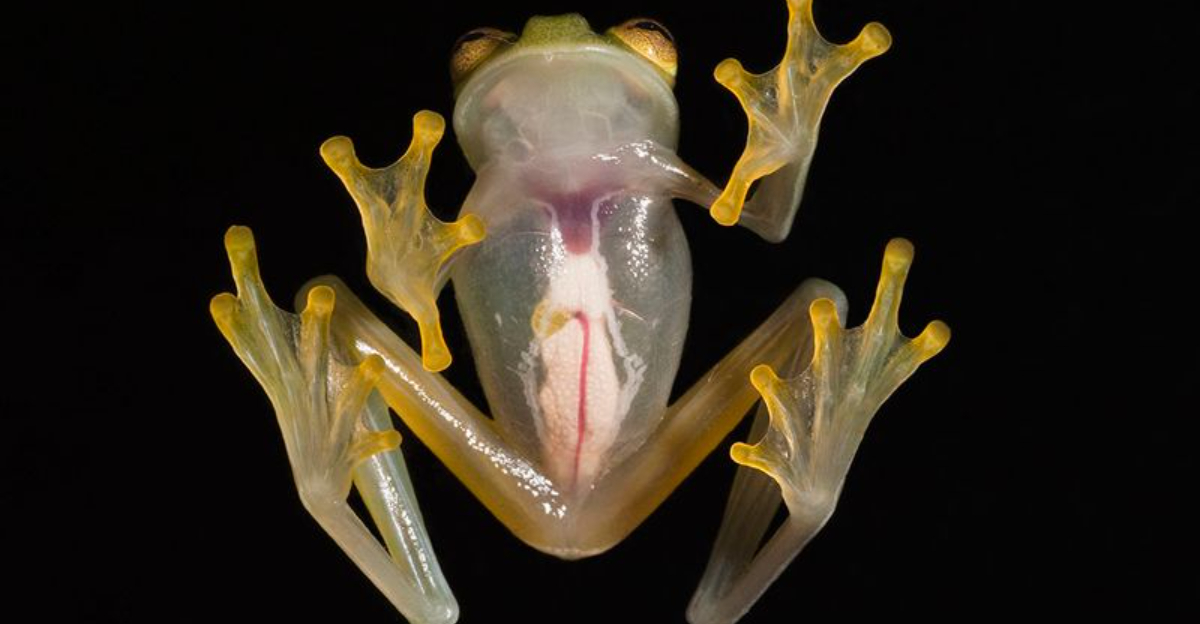The rainforests are teeming with life, from the tallest trees to the tiniest insects. Yet, amidst this vibrant tapestry, some creatures remain elusive, hidden away in the dense foliage and only revealing themselves to the most patient and observant explorers.
Today we’ll explore the stories of such elusive beings that call the rainforest their home. You’ll be surprised by some of them!
7. Harpy Eagle
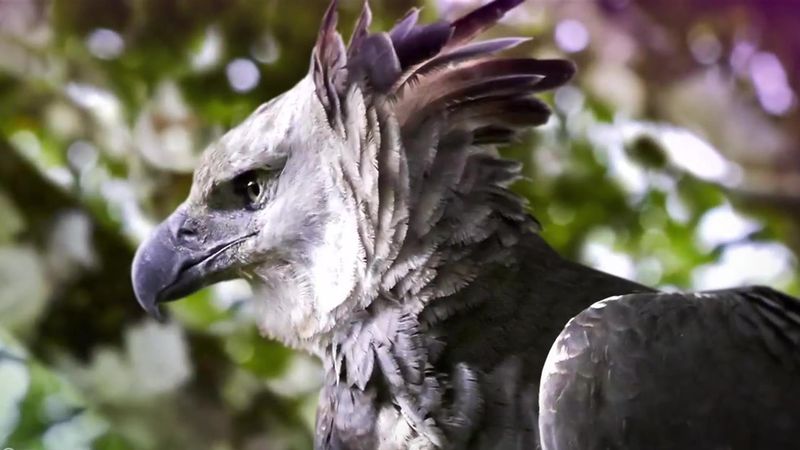
Deep within the rainforest, one of the most powerful birds of prey awaits its moment. The Harpy Eagle, with its formidable talons and keen eyesight, is a master of stealth and precision.
Although it is among the largest eagles, spotting one in the wild is a rare treat. They nest high in the canopy, preferring tall trees that provide a vantage point over their territory.
Their diet mainly consists of monkeys and sloths, which they snatch from the trees with remarkable agility. Even when soaring above, their presence is often unnoticed until they swoop down with unparalleled speed. The Harpy Eagle’s call is seldom heard, adding to its mystique.
Conservation efforts focus on protecting their habitat from deforestation. Observing these magnificent birds requires patience and a keen eye, as their camouflage blends seamlessly with the surrounding foliage.
Those lucky enough to witness a Harpy Eagle in action find it an unforgettable experience, a reminder of the rainforest’s hidden wonders.
6. Okapi
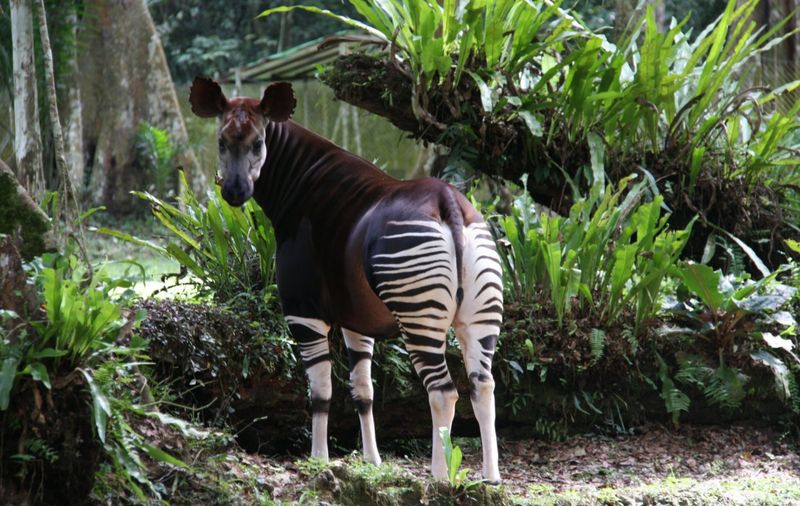
Roaming the rainforests of the Democratic Republic of the Congo, the Okapi remains one of nature’s most unique creatures.
Often mistaken for a relative of the zebra, the Okapi is actually more closely related to the giraffe. Its long neck and large ears are features inherited from its towering cousin.
The Okapi’s striking zebra-like stripes on its hindquarters and legs serve as excellent camouflage, breaking up its outline among the dense forest shadows.
Its solitary nature and elusive behavior make it a rare sight even for those familiar with its habitat. They are often heard before seen, as the Okapi uses infrasonic communication that travels long distances.
Preservation of the Okapi’s environment is crucial, as deforestation poses a significant threat.
5. Glass Frog
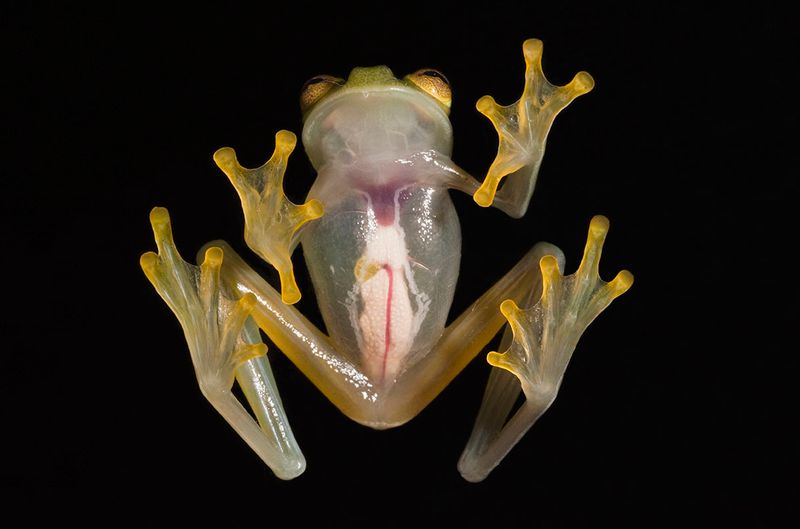
In the depths of Central and South American rainforests lies a creature almost as transparent as the air around it.
The Glass Frog, with its translucent skin, offers a fascinating glimpse into its inner workings, a feature that aids in its concealment from predators.
Mostly active during the night, these frogs are seldom seen by human eyes. Their calls, however, fill the night air, a chorus that resonates through the dense vegetation.
During the day, they cling to the undersides of leaves, their transparency helping them blend in with the background.
Glass Frogs lay their eggs on leaves overhanging streams. As the tadpoles hatch, they drop into the water below, beginning their life in a relatively safe environment. Though small and fragile, the Glass Frog’s unique adaptation showcases the creativity of evolution.
4. Aye-Aye
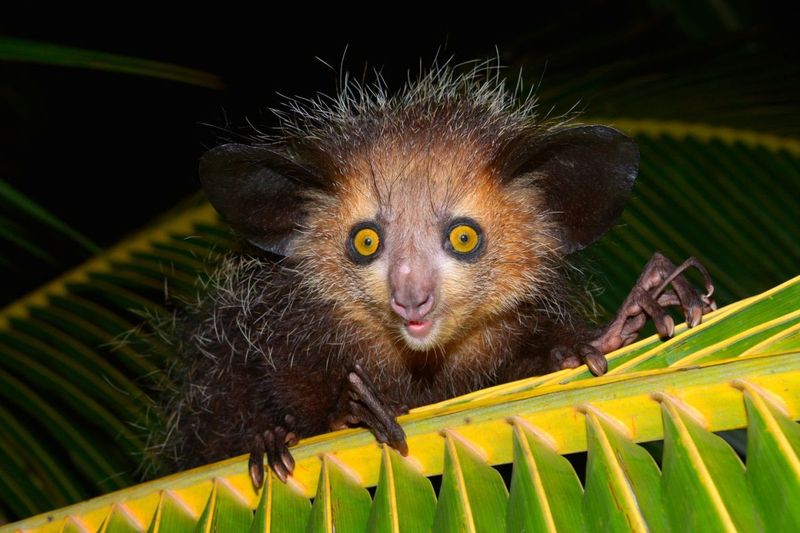
In the Madagascar rainforest, a nocturnal primate with an eerie reputation silently roams the trees. The Aye-aye, known for its peculiar appearance, is often misunderstood, its features lending it an air of mystery.
With large, eyes adapted for night vision and a bushy tail for balance, the Aye-aye is well-equipped for life in the trees. Its most distinctive feature is its elongated middle finger, used to tap on wood, listening for the hollow sounds of insect larvae hidden within.
This method of foraging, known as percussive foraging, sets the Aye-aye apart from other primates. Often regarded with superstition, efforts are underway to dispel myths and protect the Aye-aye from habitat destruction.
3. Leaf-Tailed Gecko
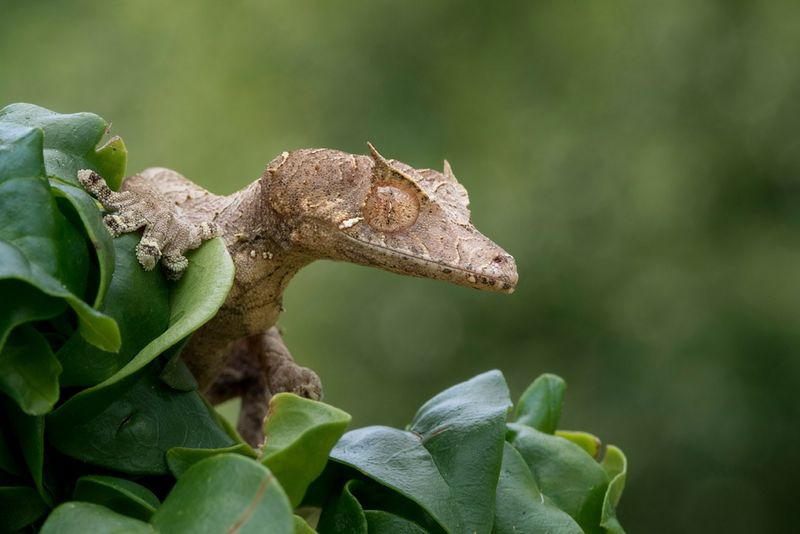
Blending seamlessly with the bark and leaves of Madagascar’s forests, the Leaf-Tailed Gecko is a master of disguise. Its ability to mimic the appearance of dead leaves or tree bark is unmatched, providing it with excellent protection against predators.
During the day, these geckos remain motionless, their camouflage rendering them nearly invisible. At night, they become active, hunting for insects and other small prey. Their eyes, large and lidless, offer excellent night vision, crucial for their nocturnal lifestyle.
The Leaf-Tailed Gecko’s adaptation is not just in its appearance but also in its behavior. Its tail, shaped remarkably like a leaf, helps it maintain balance while climbing.
2. Poison Dart Frog
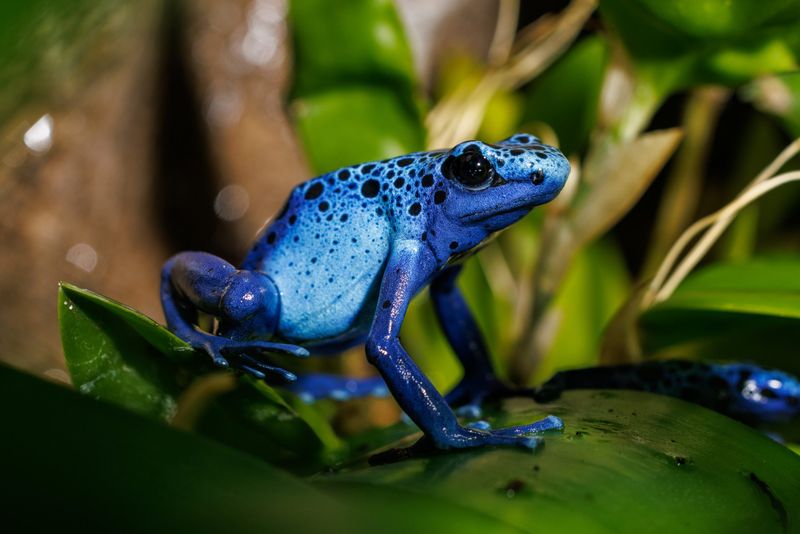
Among the vibrant chorus of rainforest life, the Poison Dart Frog stands out with its vivid colors. Found in Central and South America, these small amphibians are not only beautiful but also highly toxic, a fact well-known to the indigenous people who use their poison for hunting.
Their bright patterns serve as a warning to potential predators, a strategy known as aposematism. Despite their toxicity, these frogs pose no threat to humans unless handled directly. Observing them is a visual delight, as their colors range from brilliant blues to striking yellows.
1. Baird’s Tapir
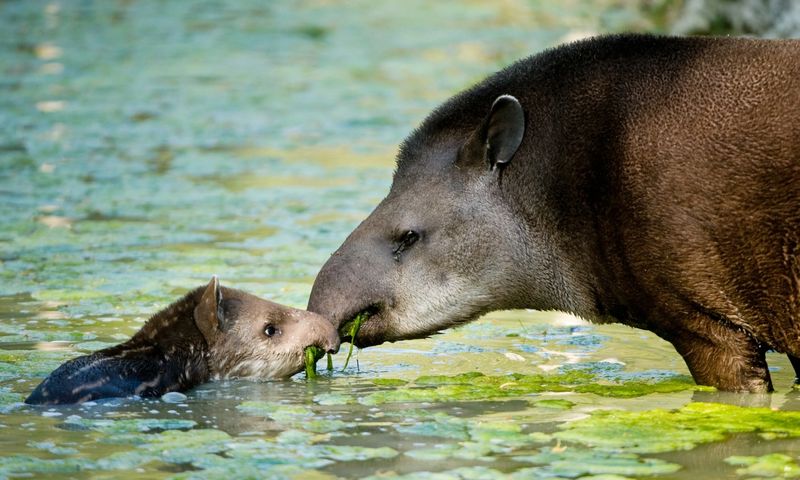
Often dubbed the ‘gardeners of the forest,’ Baird’s Tapirs play a crucial role in their ecosystem. These large herbivores, found in the rainforests of Central and South America, are key seed dispersers, which helps maintain the diversity of plant life.
Though large, tapirs are elusive creatures, often retreating to dense underbrush or water to avoid predators. Their distinctive snouts are used to grab leaves and fruits, and they are excellent swimmers, navigating rivers with ease.
Encounters with Baird’s Tapirs are rare but cherished by wildlife enthusiasts. Their conservation is vital, as they are indicators of a healthy forest. Protecting them ensures the continuation of numerous plant and animal species relying on the balance they help maintain.

